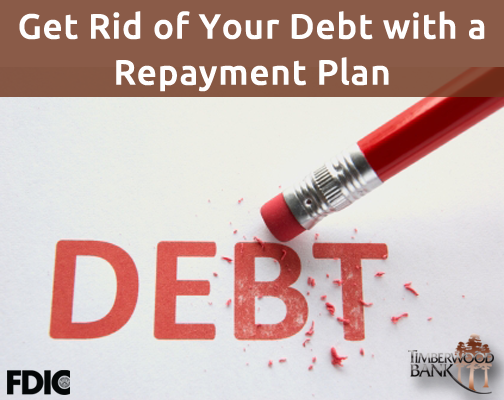Debt is awful. The feeling of owing someone money, especially a large amount of money, is the worst. Continuous debt can feel like a boulder sitting on your shoulders, weighing you down and restricting what you can do with your own money.
But how do you get out of debt? There is no one clear-cut answer, but there are multiple ways you can begin to dig yourself out of the hole.
If you have a large amount of debt, it’s time to create a plan to get out. A plan is easily repeatable, meaning it requires less thought, leaving a smaller chance that you will stop following it. Take a look at these debt reduction methods to see which one fits you.
The Snowball Method
This method sets you up for a quick win to start you on your debt repayment journey. Just a like a snowball starts small and gradually grows, the Snowball Method has you start with your smallest debt balance and work your way to gradually larger debts.
- Order your debt balances from smallest to highest
- Pay off the smallest one first while making minimum payments on the rest
- Getting the smallest one paid off first gives you encouragement to stick with it
The Avalanche Method
This method is somewhat the opposite of the Snowball Method, but it helps you pay the least amount of money over time. By starting with the loan with the highest interest rate, you reduce the amount of interest you pay on your loans.
- Order your debts from highest interest rate to lowest interest rate
- Pay down the highest interest debt first while paying the minimum on the other debts
- You’ll pay far less in interest over the life of the debts
Other Debt Repayment Methods
- Hybrid- this is the same as the Avalanche, except after ordering your debt from highest to lowest interest rate, you move the debt with the lowest balance to the top to pay first. This gives you the quick win you find with the Snowball, but also helps reduce the interest you pay.
- Which is most annoying?- which of your debts is the most annoying to you? If one is more irritating than the others, pay that one first.
- Which debt has the most emotional impact- similarly, if there is debt that carries more emotional impact, such as paying back a family member or friend, get rid of that one first.
Which plan sounds good to you? Whichever you choose, you need to stick with it. Debt can seem insurmountable, but you need to believe in the plan you choose. That’s the only way you’ll get back to living without the weight of debt on your shoulders.
Timberwood Bank, Member FDIC


